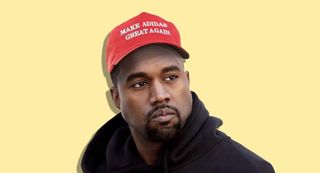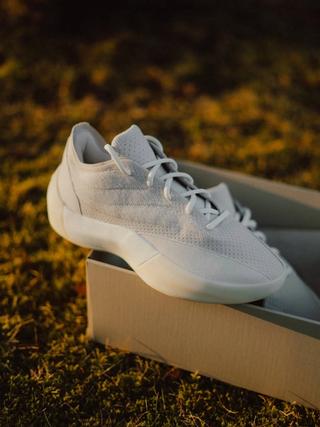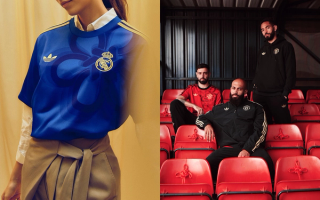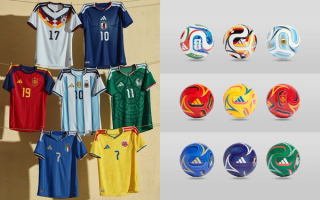How adidas blew a legitimate shot at taking over.
It’s around this time of year I like to reflect on the year that’s just passed. Not just my own personal wins, losses and epic battles, but I think upon the industry I love and work in, and how 2018 played out for the big names in footwear. Like many, I had high hopes for adidas heading into 2018. My anticipation was overflowing, waiting to see what they would bring to the table. So was my infatuation with Nike and Jordan Brand’s response to the Ls they took the year prior.
It was going to be one hell of a year for both footwear giants.
But for one, it wasn’t.
I have to make this known: I don’t wear adidas. Not because I hate adidas or because I’m loyal to only one brand, it’s just not my style. Their retros are too Euro for me and their new sock style makes my wide-ass feet hang over the midsole like some kind of muffin top. And that’s not a good look.
I don’t despise the Three Stripes by any means. In fact, My respect for the German-giant is right up there with Nike. I hold them in such high regard for their market-smashing efforts in 2017. What I’m saying is, I want it to be clear that I’m writing this from an impartial point fo view.
So how did adidas fuck up so bad in 2018? First, let’s remember how they built their expectations sky-high:
Anyone would have thought that Adidas were set to take over the world in 2018. Pretty much every blog, every media outlet and every single sneaker head (except the diehard Nike fans) were talking about how adidas’ would topple Nike in the years to come. I disagreed with that statement, after all, adidas had only jumped over Jumpman to become the second biggest selling footwear provider on the planet. They were still trailing Nike by a country mile. But I, like everyone else, was still expecting the good times to roll on for adidas.
Kanye’s migration to the Three Stripes in 2015 was a catalyst for the brand. The hype was out of this world. With more colorways and pairs available than his Nike Air YEEZY range, suddenly the YEEZY brand became more attainable. Even if most of us still took the L, we experienced hope — something that I never felt with Kanye’s Nike collection.
‘Ye was a huge drawcard for other artists, too. Like any music production, people just wanted to be associated with West. He could turn anyone into a household name in an instant (hello Taylor Swift!). There’s no doubt Ye’s name was dangled out there when signing on designers, executives and collaborative artists, enabling adidas to sign on the best of the best. We call that the ‘Ye Effect.
Around the same time of West’s signing, BOOST technology took off. Again, there was no doubt that Kanye had a hand in it’s popularity, but it’s overall success was pined down to three things: Aesthetic, Comfort and Innovation. People were sick of big clunky retros that lacked comfort, hadn’t seen any innovation for decades and looked the same as everything already in their closet. The Ultra BOOST was huge, the NMD just as prevalent, because of the artists who wanted to be aligned with West and the sneakers he was wearing. The wave rose and set of a chain reaction of sock-like woven sneakers on the market from any and every sneaker brand out there. Hell, even Nike had to play catch up on their innovation – something they’ve rarely had to do in the past. We’re tipping that in 2016, Mark Parker was regretting passing up on BASF’s BOOST tech.
This was your quintessential flip of the script. Nike, a company built on innovation, a brand known for pushing the envelop, let it slip. All while adidas were ‘pulling a Nike’ so to speak. The Swoosh were sitting back, complacent with their strong performance in 2015, thinking that there was a lot more of where that come from.
They were dead wrong.
That complacency (and probably a lot of dollars and the aforementioned ‘Ye effect) got three Nike designers, Marc Dolce, Mark Miner and Denis Dekovic, head hunted away from the Swoosh to incarnate the ‘Brooklyn Creative Studio’, a place that was supposed to be adidas’ new innovative design hub. But all we’ve seen for the past four years is the same old shit. And the new stuff we did see, like the Prophere and the Deerupt bombed bigger than Hiroshima (too soon?)
So what the fuck happened? Here’s a handful of reasons why the Three Stripes tripped up in 2018:
adidas banked on BOOST.
They had every right to. Nike do it with the Air Max series, so we expected that BOOST would be adios AIR. But dropping millions of colorways of one silhouette is the quickest way to kill off a silhouette. Plus, it didn’t help that pretty much every other sneaker that followed the UltraBOOST looked exactly like . . the Ultra BOOST.
Sure, Jordan Brand and Nike do that on a weekly basis, but the Ultra BOOST and YEEZY dont have the variety or hold the same amount of historical clout that any Air Jordan or Air Max retro has earned. The BOOST silhouette is still just 4 years old, with zero influence in sporting history. The sneaker can’t demand the markets attention once the hype has passed, because there is no substance. Still, to this day, the only real GR colorways that mean anything are the Gold Medal Pack and the OG Purple.
Flooding retailers early on may have been in response to market demand, but the silhouette’s lack of historical substance greatly exposed the brand’s . . .
Lack of Story Telling.
At the end of the day, after all the hype fades, sneakers need to mean something, otherwise, they’re just sneakers. And the people who say “they’re just sneakers” aren’t going to drop $200 every weekend on an Adidas x Oyster Holdings collaboration.
Take a look at the union x aIr Jordan 1 collaborator from this year — hell, the Nigel Sylvester. Both pairs reflect the collaborating artist better than any other collaboration this year. THAT is storytelling (let’s call it value adding) at it’s best. It also helps that the silhouettes they collaborate on have such important historical value.
For Adidas? There’s really no story to tell. Stateside anyway. Adidas can blame their founder for that, who refused to push the brand hard in the US in the company’s infant stages.
The ‘Ye Effect.
I spoke before about the ‘Ye Effect. But with all of it’s positives come the negatives. Kanye’s progressive dementia is taking it’s toll. Not only on his personal brand, but adidas’ too. His pro-Trump agenda, wild Twitter rants, petty beefs and slavery remarks hurt the Three Stripes in 2018.
His erratic behavior has left many artists distancing themselves from the former king pin. And we’re not just talking about music. Artists and brands now see Kanye as a liability. He’s simply uncontrollable. And the market responded. For the first time ever, we saw YEEZYs sitting on shelves. The interest in Kanye is dying, rapidly.
No new silhouettes.
Banking on the Ultra BOOST was one thing. But they went all in on the YEEZY 350, too, leaving the market cooked on Kanye. By the time the 500 and 700 came around, people were at their limits. Plus, nothing in the YEEZY range really hit the market with any steam like the 350 did in 2015.
To Adidas’ credit, they did provide some new silhouettes. What adi needed was a new 350, a new Ultra BOOST. Granted, they did recruit the right designers, but everything they did came out with missed the mark. The 4D-printed joints were nice, but there were two problems; 1. The price points were unrealistic and 2. They looked like an Ultra BOOST. Then there’s the Propheres, which weigh around 22 lbs each, were literal bricks, and the Deerupt looked like Spiderman jizzed over a low-budget Ultra BOOST. They both bombed big time.
Chunky dad shoes shoes were in, yet they still focused on the sock/BOOST combo. Nike on the other hand embraced it, launching new versions of the best-selling Nike of all time, the Monarch. Plus, a ton of OG dad sneakers like the 97 and 95 were plentiful (and had the historical relevance to back it up). But by the time the Falcon gained any traction, the moment had passed.
Weak Collabs.
It wasn’t just their silhouettes that missed the mark, their collabs, too, lacked any relativity. 208 seemed like Adidas were scrambling. Jumping from collaborator to collaborator, trying to fit in as many as they possibly could — even if they held no influence on the market.
Hender Scheme? Who the Fk talks about Hender Scheme in 2018? They may as we have done a collab with Cross Colors (in fact, that would have probably been cooler). But even the collabs the market valued, they fucked up. Their Dragon Ball Z collection gave the brand an incredible opportunity to save their piss-poor year. So what do you do? Punch out 8 collaborations on sneakers that no one gives a second thought to. Had they included the Stan Smith, the Superstar, the Samba, things might would have been different. Pharrell run his course, too. Every week there was seemingly another PW collab, beaten into the ground by recycling the same-old tired themes.
Let’s not even talk about how Virgil Abloh crushed any and every collab put out by Adidas last year. Every adidas collaboration simply paled in comparison.
———
To be frank, what got adidas the growth to begin with is what killed them in the end. They gained ground off the back of new, innovative products and the perfect collaborative partner. It’s exactly the formula Nike had been implementing for years. But adi over valued their sneaker’s influence on the market, invested too much into the Kanye and lacked foresight on the collaborative partners.
I want to see Adidas succeed. I really do. Competition is great for the sneaker market. It forces brands to innovate, adapt and overcome challenges — which is exactly how Nike responded. So perhaps this is just part of the cycle, albeit short-lived. Now that Nike are back, perhaps we’ll see bigger and better things from Adidas in 2019. But from their already evident over-saturation of the Ultra BOOST 2019 and investment in the YEEZY range, I think we can expect more of the same shit — again.




